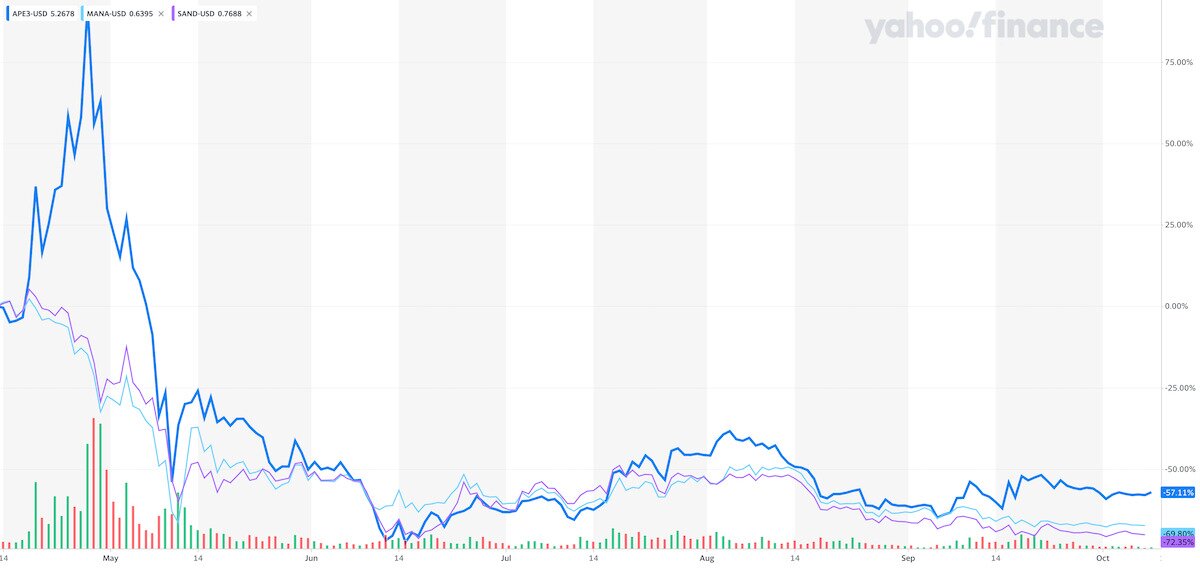- >News
- >Possibilities for Cryptocurrency and VR are Virtually Limitless
Possibilities for Cryptocurrency and VR are Virtually Limitless
Technologies of the future are bound to boggle minds. One development in particular has many scratching their heads. Some investors make their living buying, selling and developing on plots of land. A new sector in the world of cryptocurrency is selling virtual land. Virtual real estate is currently thought of as space on a webpage.
A select group of cryptocurrency projects are redefining the concept of virtual real estate. Instead of two dimensional space on a webpage, these companies are selling digital three dimensional plots of land. While the possibilities are virtually limitless, some core concepts and ideas will remain intact.
Advertising in Virtual Space
One reason why a company may want to procure virtual land, is to advertise to the inhabitants of the space. The crux of the issue for these projects then becomes filling their virtual world with users. Although virtual reality has formally been in development for about 30 years, it still has not reached anticipated levels of adoption. This is for any number of reasons, including technological limitations, usability issues, or even the fact that VR makes some people nauseous.
It’s fun to imagine what the time square of virtual reality would look like. It would present itself as the epicenter of digital avatars. A gathering space that is not limited by physical reality. The environment is free to change at the will of the owners of the land. Such an environment presents unique opportunities for advertisers. This in my mind is what early virtual reality land investors would be looking to speculate and bet on. The advertising potential for prime virtual real estate is huge, as long as there is traffic.
Limitless Potential
Virtual reality has not matured to the point where it is ready to be adopted by the masses. One reason is that the internet is not ready to handle a VR social platform. Another reason is that the technology is still quite expensive. We’ve reached a bit of a tipping point on both of those dimensions. Phones are now powerful enough in terms of bandwidth, and screen quality to provide a half decent VR experience. Furthermore, blockchain (the underlying software for cryptocurrency) appears to be an ideal platform for hosting a collaborative VR platform.
Two very large barriers to VR adoption are eroding right before our eyes. As the world recedes into more isolated interactions with coworkers and fellow citizens, the case for VR grows stronger. Perhaps we will have the option to host Zoom meetings in a virtual boardroom. Virtual Reality shopping could be a way for remote workers to experience something of a real-world shopping experience from the comfort of their own home. The integration of digital currency, and unique virtual assets will allow for seamless shopping experiences.
The Appreciation of Digital Land
Aside from advertising, there is little reason for companies to buy up virtual plots of land. However, there may be a strong speculative case to be made for the long term appreciation of virtual land. The platforms that are selling virtual land need to convince the buyers that their virtual platform will be around long into the future.
This was an early concern for bitcoin investors. There was a real concern that the bitcoin network would simply cease to exist, driving any investment straight to zero. With many competing Metaverse companies there will absolutely be digital land that ends up being barren.
An Open Source Virtual Reality Platform
Through this lens, it makes sense for the various virtual reality cryptocurrency projects to collaborate on a common open source platform. Instead of a swath of different virtual reality worlds, each competing for market share, a lesson can be learned from the bitcoin approach.
One of the reasons why bitcoin is so successful is because it is completely absent of a centralized leader. It is open source, and ready for any developer to contribute and make improvements. As an indication of bitcoin’s success with this approach, bitcoin controls 66% of the entire market share of cryptocurrencies. No other cryptocurrency comes close to dethroning bitcoin.
How Much is Virtual Land Worth?
The largest purchase of virtual land was for about $215,000 USD. The cheapest, and smallest plots of land go for around $800. The record purchase was for an aggregated piece of 190 parcels of land.
It is very easy to tell why someone might purchase a piece of land in physical reality, but why would anyone purchase virtual land, this early into the life of Decentraland? On the chance that decentraland gains massive traction as the goto VR world of choice, then even the smallest plots of land may be a worthwhile investment.
To say virtual land speculation is volatile would be an understatement. Over the last six months we’ve seen Metaverse tokens trend down up to 90%.
Apecoin, Decentraland and Sandbox have all seen enormous losses over the last six months. Source: Yahoo Finance
The Virtual Reality Crypto Projects
There are a handful of VR cryptocurrency projects, although there is really just one that has any sort of measurable traction. Decentraland is an open-world virtual reality platform that exists within the Ethereum ecosystem. Decentraland works by selling unique plots of land to users, who are then able to build on top of the land they purchased. Using a provided software development kit (SDK), owners of land may place virtually anything they like on the land that they own. Because the platform exists on Ethereum, it is an open source, decentralized environment. No one, not even the creators of Decentraland can manipulate or revoke the land you own. This is just the sort of open source approach that is likely to work, and provide long-term value for virtual land investors.
Decentraland is hardly the only company in the space, however. The Sandbox, and it’s SAND token, has a similar structure and is also based in Ethereum.
Yuga Labs, the company behind ultra popular Bored Ape Yacht Club NFT project, also introduced its own token, Apecoin, in 2022. It’s unknown if Apecoin will have a crypto VR component but it’s already promising a Metaverse with graphics far surpassing what’s offered in Decentraland or the Sandbox.
Finally the biggest player of all in the Metaverse and VR is, of course, Meta. The company formerly known as Facebook as made a hard pivot to Metaverse with very little success thus far. It’s unknown at this time if Meta will have any blockchain or crypto-related component. Meta previously attempted to launch its own token with dismal results.
Crypto and VR are Ultra Niche
One of the main barriers to the adoption of virtual reality is the technical knowledge required to enter and interact with the world. Virtual reality is already a niche product, suited really only for the most enthusiastic of users. Combined that with the number of virtual reality users that also use cryptocurrency, and you have an extremely small subset of the population. Much of the infrastructure and core user base for a cryptocurrency based virtual reality still needs to be developed and improved upon. Even still, it appears that VR finally has a strong foundation on which to build upon. The possibilities for cryptocurrency and VR are virtually limitless.


